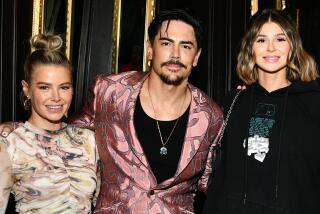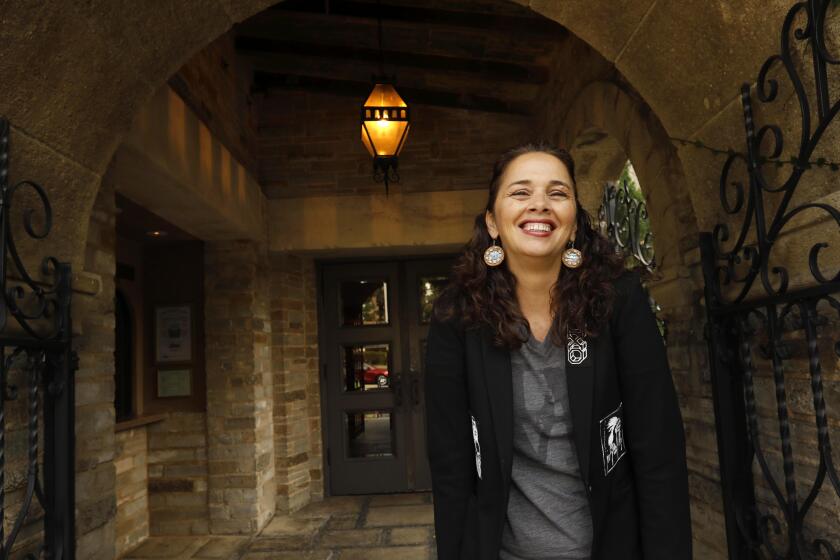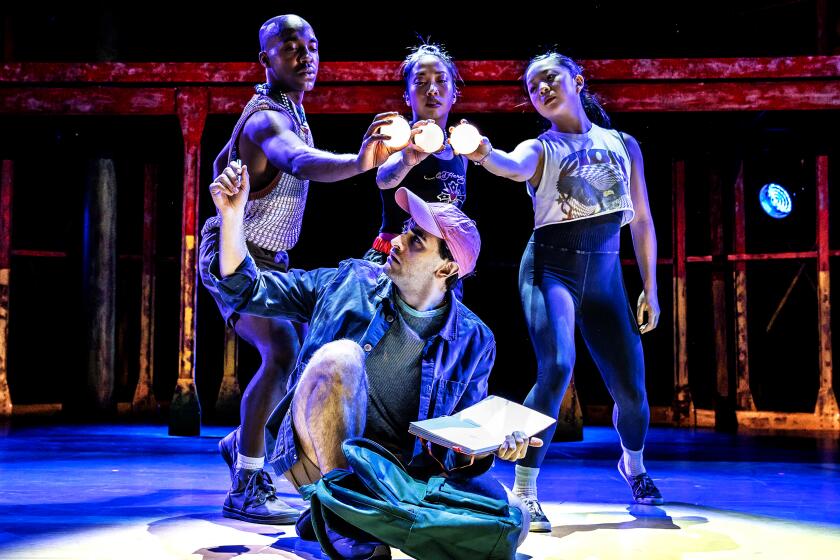Negatives ‘authenticated’ as Ansel Adams’ work — but by whom?
The case of the “lost” Ansel Adams negatives that purportedly are worth $200 million has turned into a public argument between Rick Norsigian, who found them at a Fresno garage sale 10 years ago, and the great photographer’s family and former associates and leading art-photography dealers, who deny that Adams took them.
The brouhaha might have been avoided had Norsigian, a wall-painter for the Fresno school district, taken the advice years ago of Adams biographer Jonathan Spaulding. Norsigian had brought the negatives to Spaulding’s office at the Natural History Museum of Los Angeles County; Spaulding suggested that he send them to a museum or public archive where professionals could make a thorough study.
Instead, Norsigian went on trying to authenticate the pictures on his own. Eventually he assembled his own team of paid experts — all virtual unknowns in the photography world. Despite their lack of cachet, the report and appraisal Norsigian issued last month made headlines all over the world, because it concluded not only that the 65 glass-plate negatives of Yosemite and coastal California had been taken by Adams in the 1920s and early 1930s but also that they were worth at least $200 million.
Norsigian’s top authenticators, art consultant Robert C. Moeller III and photographer Patrick Alt, respectively described that sum this week as “puzzling” and a “bunch of crap.”
Spaulding, now executive director of the Museum of the American West at L.A.’s Autry National Center, recalled this week how Norsigian had visited him about seven years ago, bringing the negatives in a box.
Spaulding says he told Norsigian that, although the pictures could have been taken by Adams, he wasn’t sure and that the best thing would be to get them into the hands of curators who would know how to do tests and comparisons with an eye toward establishing who took them.
“They looked like rather clichéd views of Yosemite, technically skillful but really not outstanding,” recalled Spaulding, who at the time was director of the Natural History Museum’s Seaver Center for Western History Research. “But that wasn’t totally inconsistent. Ansel was in his 20s then, and it wasn’t inconceivable that he was doing work of that sort. But it felt to me like it could have been any number of commercial photographers working at that time.”
Norsigian failed to enlist people like Spaulding, whose book, “Ansel Adams and the American Landscape,” was published in 1995, or Mary Street Alinder, who was the photographer’s chief assistant from 1979 until his death in 1984. Sheco-wrote the Adams autobiography published in 1986 and followed it with her own book, “Ansel Adams: A Biography.” Instead, Norsigian ended up with Alt, who says the law firm working with Norsigian found him on the Internet, and Moeller, who said he was contacted by a firm member who knew him.
“I don’t recognize the names. It seems very questionable to me,” said Deborah Klochko, executive director of San Diego’s Museum of Photographic Arts.
“To think you can authenticate these to make a lot of money; that’s a problem right there,” Klochko added. She said she hopes Norsigian will donate his find to the University of Arizona’s Center for Creative Photography, which Adams co-founded and made the repository for his work.
Alinder said she looked at the pictures with an open mind when Norsigian approached her in 2002, thinking “it would be wonderful” if he indeed had unearthed unknown Ansel Adams pictures. But “I thought almost all of them did not measure up,” she said, although the handwriting on the sleeves containing the negatives did look to her like that of Virginia Adams, the photographer’s wife. She said she continued to help Norsigian with contacts to pursue his quest, then stopped in 2004 after he offered her 25% of any earnings from future sales of the negatives in return for helping him prove their authenticity.
Alinder said it offended her that Norsigian’s motive now appeared to be money. “That was the end for me. I don’t think Mr. Norsigian is a bad person, but he wants so hard to believe this that he doesn’t see all the corners he’s bent.”
Norsigian responded through his attorney, Arnold Peter, whose Beverly Hills firm is helping him market prints priced at $7,500 and $1,500, with posters at $45. Norsigian offered Alinder a percentage of earnings from the negatives to serve as a consultant, Peter said, but she would not have been required to vouch for their authenticity. “He had basically hit a wall,” Peter said. “People would tell him these were Ansel Adams works but wouldn’t go on record, and she could help by opening doors, making introductions.”
Peter added that he and Norsigian would welcome a neutral evaluation of the negatives, with the cooperation of Adams’ inner circle. William Turnage, managing trustee of the Ansel Adams Publishing Rights Trust, which oversees copyrights for the photographer’s work, said he has refused Peter’s proposal to jointly appoint a panel of experts. “We don’t want to dignify their claims because we’re very confident they’re false.”
As for Norsigian’s reluctance to donate his find to a museum for study, Peter said, “We live in a capitalist system, and there’s nothing wrong with Mr. Norsigian profiting from the time and resources he’s put into this project.”
Norsigian’s claim rests for now on two handwriting experts’ opinion that it’s Virginia Adams’ writing on the manila sleeves, and on the opinions rendered by Alt and Moeller. Alt is a Culver City photographer who has a bachelor’s degree from California Institute of the Arts and a master’s in painting and photography from UC Irvine; he says he has studied Adams’ methods intensely over the years and applies them to his own work, often with vintage equipment including a Korona Viewcamera, the kind Adams used in the 1920s.
“I don’t have an academic credential for this, but I feel as if my knowledge is as in-depth or more so” than many museum-based scholars, Alt said. “The problem I have with so many curators is they’ve never looked through a camera.”
In the report, he speculated from scorch marks on some of the negatives that they had survived a 1937 fire at Adams’ studio in Yosemite, and Virginia Adams was hurriedly enlisted to catalog them. In the early 1940s, Alt theorizes, Adams showed them to his students at what’s now Art Center College of Design in Pasadena, “to regale them with what was surely a great story.”
It was important for Norsigian to trace a path for the negatives to L.A., where Art Center was then based, because the man he bought them from in Fresno in 2000 had said he acquired them in the 1940s at a warehouse salvage sale in Los Angeles.
“It will never be possible to know why [Adams] left them in storage,” Alt said in the report. Adams’ associates say the photographer, known for safeguarding his work in a bank vault or in a concrete bunker behind his house, would not have let 65 of his pictures vanish.
Alt stands by his theory, although he says he would not be upset if the negatives prove to have been taken by a previously unknown photographer, Earl Brooks, whose niece in Oakland recently came forward with old prints that two former Adams assistants say are matches for three pictures in Norsigian’s trove. “If it was Uncle Earl, fine,” Alt said. “Then we have a new photographer who was doing some quite excellent work, and we add him to the history of California photography.”
Moeller, a Jackson Hole, Wyo., advisor to art collectors, said Wednesday that he had no particular expertise in Adams’ work or in photography but “applied myself in exactly the way I have done over the years” when evaluating and authenticating paintings for his clients. The Norsigian team’s 20-page authentication report identifies him only as a Harvard-trained former director of the Duke University Art Museum and curator of the Museum of Fine Arts, Boston. Moeller led the Duke museum in 1968-69, when it was in its infancy and its first gallery space was still in the planning stage; from 1970 to 1980, he was a curator of European decorative art and sculpture at the Boston museum.
Moeller said he was surprised last month when appraiser and gallery owner David W. Streets set the negatives’ value at $200 million: “I find it rather puzzling.” Alt puts it bluntly: “It’s the biggest bunch of crap I’ve heard in my life.”
Spaulding, the Adams biographer, considers the figure “wildly inflated.” He said that when he examined the negatives years ago, he told Norsigian that “the real value of a photographic fine art work is in the print,” and that consequently, even if they were Adams’ negatives, prints that somebody else made from them would not be very valuable. The prints Norsigian is selling are by Jesse Kalisher, a North Carolina photographer represented by Streets’ Beverly Hills gallery.
Streets said Thursday that he stands by his estimate and is “disappointed” that Moeller and Alt don’t agree, noting that their expertise is in art aesthetics, not art-as-commerce. He emphasized that the $200 million is based on a “multi-generational” projection of earnings over decades that will produce income for Norsigian’s grandchildren, as Adams’ images continue to do for his. Streets said he factored in a discount because the Norsigian prints will be unsigned and not printed by the photographer himself but assumed high demand because of global fascination with Adams and his dramatic landscapes. The authentication controversy only helps to heat the market for all of Adams’ ouevre, he said, including both established images and the Norsigian find.
Streets said he was not paid for his appraisal but that he expects to start earning a dealer’s commission starting in late September, when plans call for the first 17 Norsigian prints to go on sale at his gallery.
Though Spaulding still hopes the contested find will end up in a museum as a worthwhile bit of old-time photographic evidence about Yosemite, he understands why Norsigian didn’t take his long-ago advice to donate them where highly trained and credentialed experts could research them.
“I don’t blame him at all. It’s the ultimate ‘Antiques Roadshow’ moment,” the museum director said. “It’s a very interesting story, and if it gives people a chance to think about Ansel Adams and what makes a great photograph, then it’s not a waste of time.”
mike.boehm@latimes.com
More to Read
The biggest entertainment stories
Get our big stories about Hollywood, film, television, music, arts, culture and more right in your inbox as soon as they publish.
You may occasionally receive promotional content from the Los Angeles Times.






